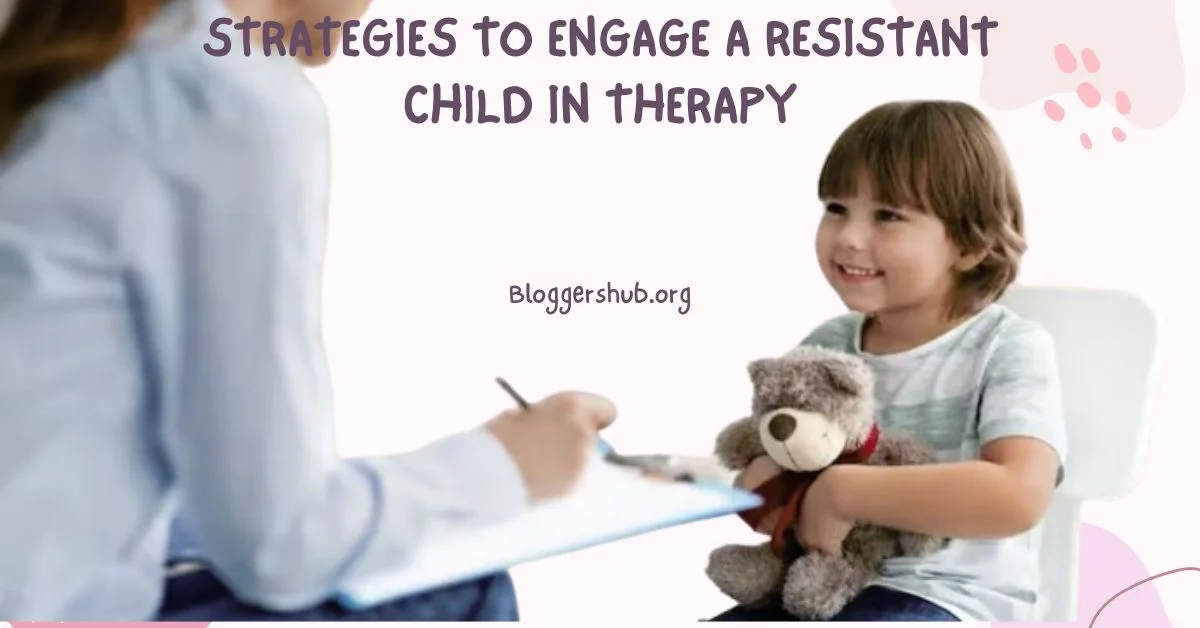Unlocking Healing: Strategies to Engage a Resistant Child in Therapy
Engaging a resistant child in therapy can present a significant challenge for mental health professionals and caregivers alike. Whether the child is apprehensive about treatment, lacks motivation to participate, or simply feels reluctant to open up, building a therapeutic alliance requires patience, creativity, and a deep understanding of the child’s unique needs and concerns. This article explores effective strategies to overcome resistance and foster meaningful engagement in therapy sessions.
How to Engage A Resistant Child in Therapy.
Here are a few helpful strategies to engage a resistant child in therapy.
Understanding Resistance
Before delving into strategies, it’s crucial to understand the underlying reasons for a child’s resistance to therapy. Resistance can stem from various sources, including:
Fear and Anxiety
The child may feel anxious about the therapeutic process, uncertain about what to expect, or fearful of being judged or misunderstood.
Lack of Trust
The child may struggle to trust the therapist or caregiver, particularly if they have experienced previous breaches of trust or have attachment issues.
Communication Barriers
The child may have difficulty expressing thoughts and feelings verbally, which can lead to frustration and a reluctance to participate in therapy.
External Factors
Environmental stressors, such as family conflicts, academic pressure, or socioeconomic challenges, can impact a child’s willingness to engage in therapy.
Strategies to Foster Engagement
Here are a few effective strategies to foster engagement in child therapy among resistant children.
Build Trust and Rapport
Establishing a trusting relationship is foundational to engaging a resistant child in therapy. Take the time to get to know the child, validate their experiences, and demonstrate empathy and understanding. Building rapport may involve engaging in non-threatening activities like playing games or drawing to gradually ease into deeper therapeutic work.
Empower the Child
Involve the child in the therapeutic process by soliciting their input and preferences and taking them to the best counselling centre. Offer choices whenever possible, allowing the child to have a sense of autonomy and control over their therapy sessions. Empowerment can help increase the child’s investment in therapy and foster a sense of ownership over their healing journey.
Utilize Play and Creative Therapies
For younger children or those who struggle with verbal expression, play, and creative therapies can provide a non-intrusive avenue for communication and self-expression. Incorporate art, music, storytelling, or role-playing activities into therapy sessions to engage the child’s imagination and facilitate emotional expression.
Focus on Strengths and Interests
Identify the child’s strengths, interests, and competence areas and integrate them into therapy interventions. Tailor therapeutic activities to align with the child’s preferences, hobbies, and talents, fostering a sense of enjoyment and accomplishment in the therapeutic process.
Normalize Resistance and Validate Feelings
Acknowledge and validate the child’s feelings of resistance without judgment or criticism. Normalize their apprehensions and fears, emphasizing that feeling uncertain or hesitant about therapy is okay. Use empathic listening and reflective techniques to convey understanding and acceptance.
Collaborate with Caregivers
Work collaboratively with the child’s caregivers to address any barriers to engagement and develop a cohesive treatment plan. Keep caregivers informed about the child’s progress in therapy and involve them in goal-setting and decision-making processes. A united front between therapist and caregivers can provide a supportive framework for the child’s therapeutic journey.
Set Realistic Goals and Celebrate Progress
Break therapy goals into manageable, achievable steps, and celebrate even small victories. Recognize and reinforce the child’s efforts and progress, fostering a sense of accomplishment and motivation to continue engaging in therapy.
Conclusion
Engaging a resistant child in therapy requires patience, empathy, and a willingness to adapt therapeutic approaches to meet the child’s unique needs. By building trust, empowering the child, utilizing creative therapies, and collaborating with caregivers, mental health professionals can create a supportive environment conducive to healing and growth. Remember, every child’s journey toward healing is unique, and progress may unfold gradually over time. With dedication and perseverance, even the most resistant child can find solace and healing within the therapeutic relationship.







